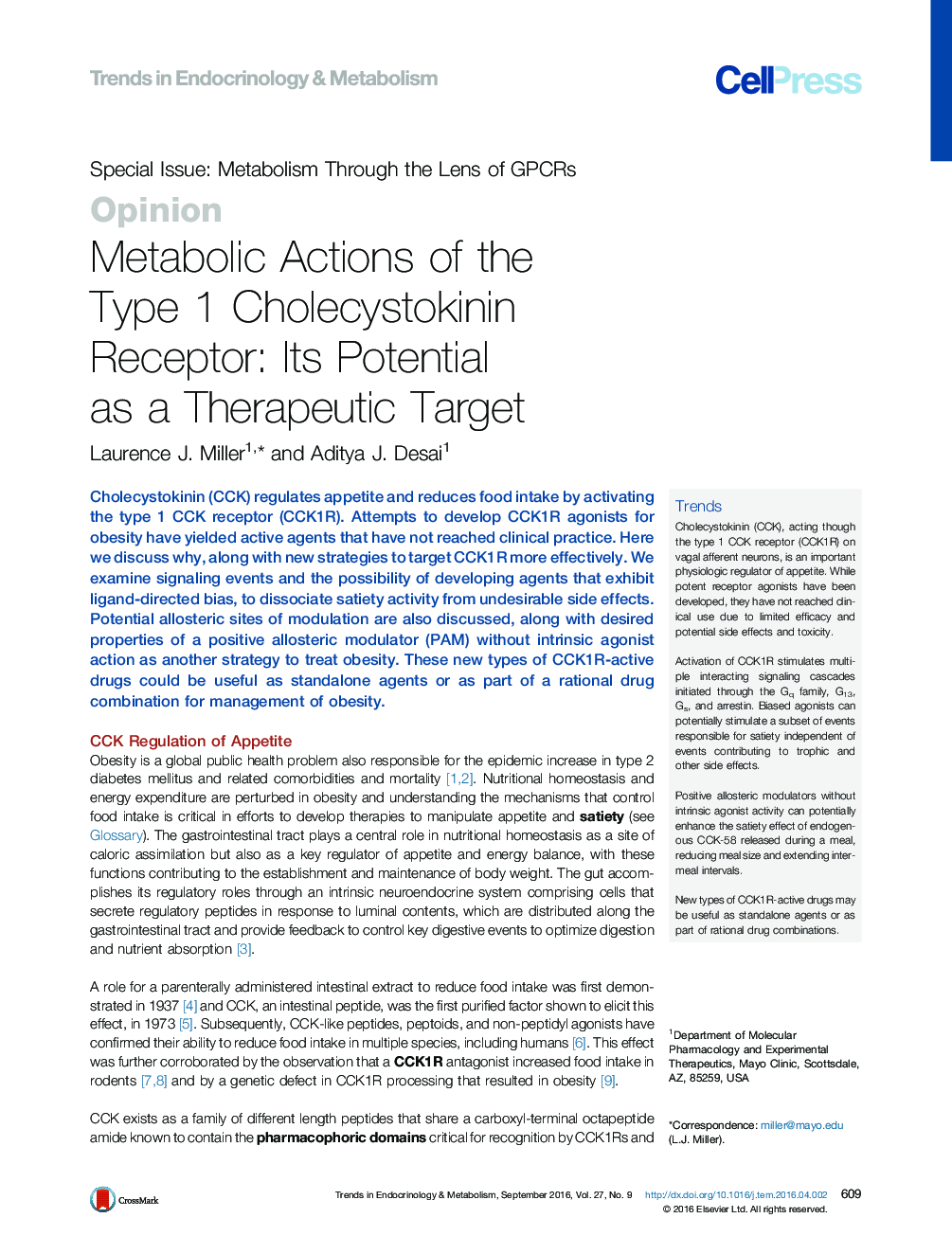| Article ID | Journal | Published Year | Pages | File Type |
|---|---|---|---|---|
| 2810053 | Trends in Endocrinology & Metabolism | 2016 | 11 Pages |
Cholecystokinin (CCK) regulates appetite and reduces food intake by activating the type 1 CCK receptor (CCK1R). Attempts to develop CCK1R agonists for obesity have yielded active agents that have not reached clinical practice. Here we discuss why, along with new strategies to target CCK1R more effectively. We examine signaling events and the possibility of developing agents that exhibit ligand-directed bias, to dissociate satiety activity from undesirable side effects. Potential allosteric sites of modulation are also discussed, along with desired properties of a positive allosteric modulator (PAM) without intrinsic agonist action as another strategy to treat obesity. These new types of CCK1R-active drugs could be useful as standalone agents or as part of a rational drug combination for management of obesity.
TrendsCholecystokinin (CCK), acting though the type 1 CCK receptor (CCK1R) on vagal afferent neurons, is an important physiologic regulator of appetite. While potent receptor agonists have been developed, they have not reached clinical use due to limited efficacy and potential side effects and toxicity.Activation of CCK1R stimulates multiple interacting signaling cascades initiated through the Gq family, G13, Gs, and arrestin. Biased agonists can potentially stimulate a subset of events responsible for satiety independent of events contributing to trophic and other side effects.Positive allosteric modulators without intrinsic agonist activity can potentially enhance the satiety effect of endogenous CCK-58 released during a meal, reducing meal size and extending intermeal intervals.New types of CCK1R-active drugs may be useful as standalone agents or as part of rational drug combinations.
